Die Hu
Pentest-R1: Towards Autonomous Penetration Testing Reasoning Optimized via Two-Stage Reinforcement Learning
Aug 10, 2025Abstract:Automating penetration testing is crucial for enhancing cybersecurity, yet current Large Language Models (LLMs) face significant limitations in this domain, including poor error handling, inefficient reasoning, and an inability to perform complex end-to-end tasks autonomously. To address these challenges, we introduce Pentest-R1, a novel framework designed to optimize LLM reasoning capabilities for this task through a two-stage reinforcement learning pipeline. We first construct a dataset of over 500 real-world, multi-step walkthroughs, which Pentest-R1 leverages for offline reinforcement learning (RL) to instill foundational attack logic. Subsequently, the LLM is fine-tuned via online RL in an interactive Capture The Flag (CTF) environment, where it learns directly from environmental feedback to develop robust error self-correction and adaptive strategies. Our extensive experiments on the Cybench and AutoPenBench benchmarks demonstrate the framework's effectiveness. On AutoPenBench, Pentest-R1 achieves a 24.2\% success rate, surpassing most state-of-the-art models and ranking second only to Gemini 2.5 Flash. On Cybench, it attains a 15.0\% success rate in unguided tasks, establishing a new state-of-the-art for open-source LLMs and matching the performance of top proprietary models. Ablation studies confirm that the synergy of both training stages is critical to its success.
Regret Minimization in Population Network Games: Vanishing Heterogeneity and Convergence to Equilibria
Jul 23, 2025Abstract:Understanding and predicting the behavior of large-scale multi-agents in games remains a fundamental challenge in multi-agent systems. This paper examines the role of heterogeneity in equilibrium formation by analyzing how smooth regret-matching drives a large number of heterogeneous agents with diverse initial policies toward unified behavior. By modeling the system state as a probability distribution of regrets and analyzing its evolution through the continuity equation, we uncover a key phenomenon in diverse multi-agent settings: the variance of the regret distribution diminishes over time, leading to the disappearance of heterogeneity and the emergence of consensus among agents. This universal result enables us to prove convergence to quantal response equilibria in both competitive and cooperative multi-agent settings. Our work advances the theoretical understanding of multi-agent learning and offers a novel perspective on equilibrium selection in diverse game-theoretic scenarios.
One Prototype Is Enough: Single-Prototype Activation for Interpretable Image Classification
Jun 24, 2025Abstract:In this paper, we propose ProtoSolo, a novel deep neural architecture for interpretable image classification inspired by prototypical networks such as ProtoPNet. Existing prototype networks usually rely on the collaborative decision-making of multiple prototypes to achieve the classification and interpretation of a single category. In contrast, ProtoSolo only requires the activation of a single prototype to complete the classification. This allows the network to explain each category decision by only providing the features that are most similar to the prototype of that category, significantly reducing the cognitive complexity of the explanation. Secondly, we propose a feature-based comparison method, which uses feature map instead of full-channel feature vector as the object of similarity comparison and prototype learning. This design enables ProtoSolo to utilize richer global information for classification while relying on a single prototype activation. In addition, we propose a non-prototype projection learning strategy, which preserves the information association between the prototype and the training image patches while avoiding the sharp change of the network structure caused by the projection operation, thus avoiding its negative impact on the classification performance. Experiments on the CUB-200-2011 and Stanford Cars datasets show that ProtoSolo achieves superior performance in classification tasks and reaches the best level in terms of cognitive complexity of explanations compared to state-of-the-art interpretable methods. The code is available at https://github.com/pyt19/ProtoSolo.
Hierarchical Salient Patch Identification for Interpretable Fundus Disease Localization
May 23, 2024Abstract:With the widespread application of deep learning technology in medical image analysis, how to effectively explain model decisions and improve diagnosis accuracy has become an urgent problem that needs to be solved. Attribution methods have become a key tool to help doctors better understand the diagnostic basis of models, and they are used to explain and localize diseases in medical images. However, previous methods suffer from inaccurate and incomplete localization problems for fundus diseases with complex and diverse structures. In order to solve the above problems, we propose a weakly supervised interpretable fundus disease localization method hierarchical salient patch identification (HSPI), which can achieve interpretable disease localization using only image-level labels and neural network classifiers. First, we proposed salient patch identification (SPI), which divides the image into several patches and optimizes consistency loss to identify which patch in the input image is most important for decision-making to locate the disease. Secondly, we propose a hierarchical identification strategy to force SPI to analyze the importance of different areas to neural network classifiers decision-making to comprehensively locate disease areas. Then, we introduced conditional peak focusing to ensure that the mask vector can accurately locate the decision area. Finally, we also propose patch selection based on multi-size intersection to filter out incorrectly or additionally identified non-disease regions. We conduct disease localization experiments on medical image datasets and achieve the best performance on multiple evaluation metrics compared with previous interpretable attribution methods. We performed additional ablation studies to verify the effectiveness of each method.
FeaInfNet: Diagnosis in Medical Image with Feature-Driven Inference and Visual Explanations
Dec 04, 2023Abstract:Interpretable deep learning models have received widespread attention in the field of image recognition. Due to the unique multi-instance learning of medical images and the difficulty in identifying decision-making regions, many interpretability models that have been proposed still have problems of insufficient accuracy and interpretability in medical image disease diagnosis. To solve these problems, we propose feature-driven inference network (FeaInfNet). Our first key innovation involves proposing a feature-based network reasoning structure, which is applied to FeaInfNet. The network of this structure compares the similarity of each sub-region image patch with the disease templates and normal templates that may appear in the region, and finally combines the comparison of each sub-region to make the final diagnosis. It simulates the diagnosis process of doctors to make the model interpretable in the reasoning process, while avoiding the misleading caused by the participation of normal areas in reasoning. Secondly, we propose local feature masks (LFM) to extract feature vectors in order to provide global information for these vectors, thus enhancing the expressive ability of the FeaInfNet. Finally, we propose adaptive dynamic masks (Adaptive-DM) to interpret feature vectors and prototypes into human-understandable image patches to provide accurate visual interpretation. We conducted qualitative and quantitative experiments on multiple publicly available medical datasets, including RSNA, iChallenge-PM, Covid-19, ChinaCXRSet, and MontgomerySet. The results of our experiments validate that our method achieves state-of-the-art performance in terms of classification accuracy and interpretability compared to baseline methods in medical image diagnosis. Additional ablation studies verify the effectiveness of each of our proposed components.
Hierarchical Codebook Design and Analytical Beamforming Solution for IRS Assisted Communication
Aug 03, 2023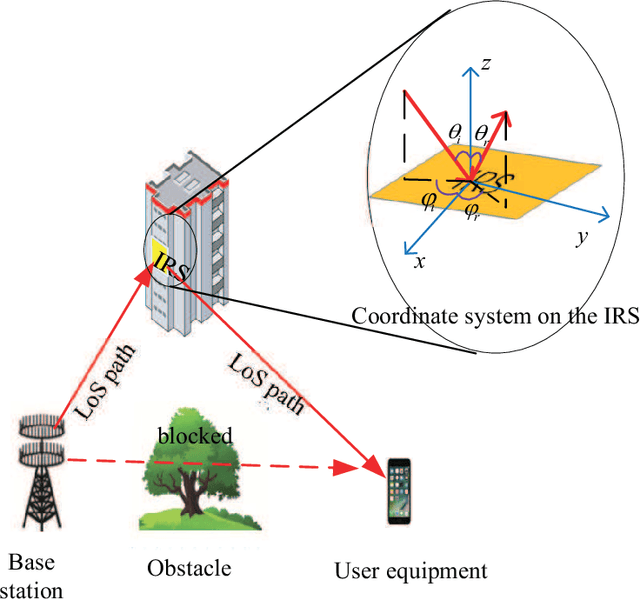
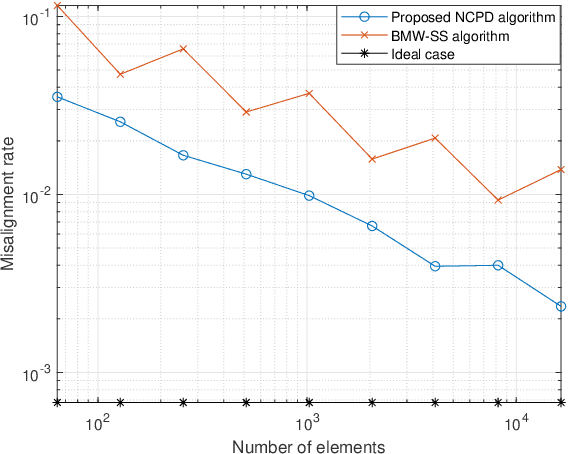
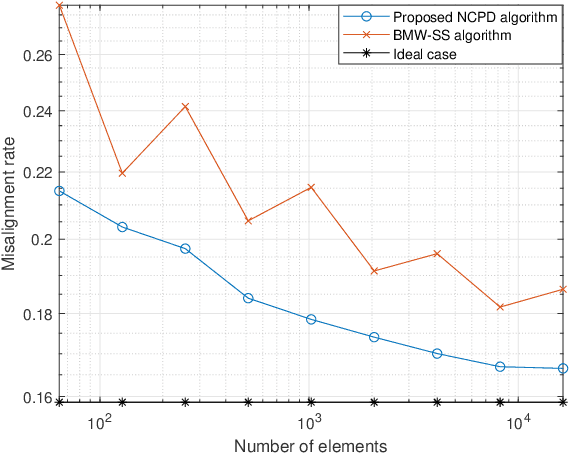

Abstract:In intelligent reflecting surface (IRS) assisted communication, beam search is usually time-consuming as the multiple-input multiple-output (MIMO) of IRS is usually very large. Hierarchical codebooks is a widely accepted method for reducing the complexity of searching time. The performance of this method strongly depends on the design scheme of beamforming of different beamwidths. In this paper, a non-constant phase difference (NCPD) beamforming algorithm is proposed. To implement the NCPD algorithm, we first model the phase shift of IRS as a continuous function, and then determine the parameters of the continuous function through the analysis of its array factor. Then, we propose a hierarchical codebook and two beam training schemes, namely the joint searching (JS) scheme and direction-wise searching (DWS) scheme by using the NCPD algorithm which can flexibly change the width, direction and shape of the beam formed by the IRS array. Simulation results show that the NCPD algorithm is more accurate with smaller side lobes, and also more stable on IRS of different sizes compared to other wide beam algorithms. The misalignment rate of the beam formed by the NCPD method is significantly reduced. The time complexity of the NCPD algorithm is constant, thus making it more suitable for solving the beamforming design problem with practically large IRS.
Hybrid Interference Mitigation Using Analog Prewhitening
Mar 04, 2021
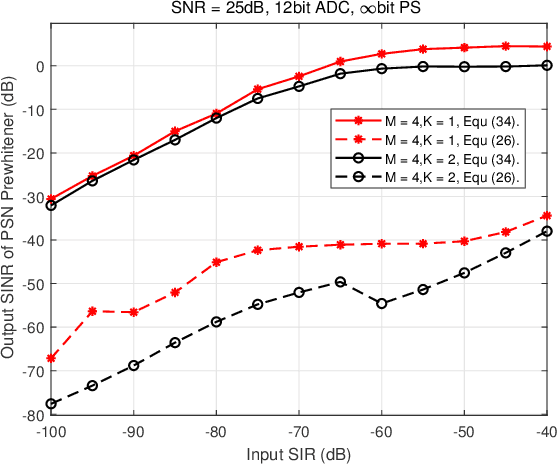
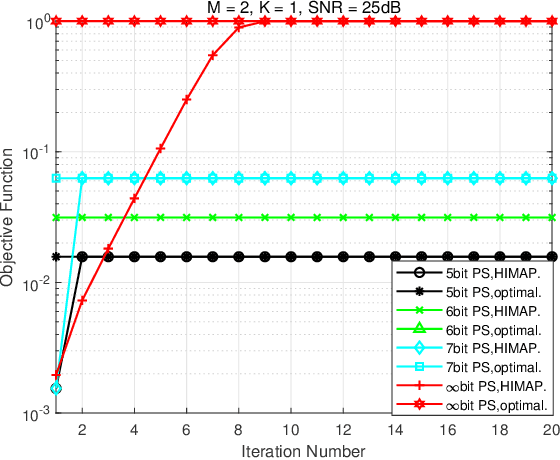
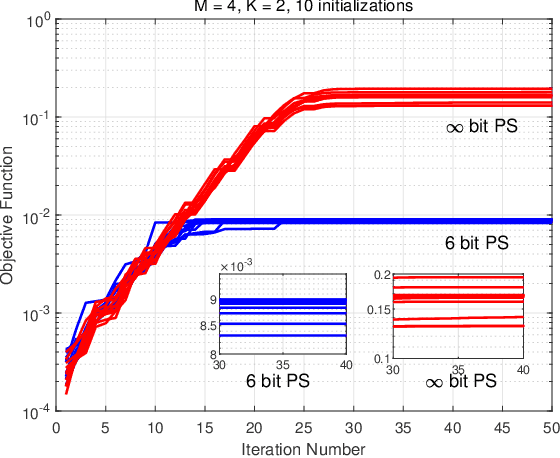
Abstract:This paper proposes a novel scheme for mitigating strong interferences, which is applicable to various wireless scenarios, including full-duplex wireless communications and uncoordinated heterogenous networks. As strong interferences can saturate the receiver's analog-to-digital converters (ADC), they need to be mitigated both before and after the ADCs, i.e., via hybrid processing. The key idea of the proposed scheme, namely the Hybrid Interference Mitigation using Analog Prewhitening (HIMAP), is to insert an M-input M-output analog phase shifter network (PSN) between the receive antennas and the ADCs to spatially prewhiten the interferences, which requires no signal information but only an estimate of the covariance matrix. After interference mitigation by the PSN prewhitener, the preamble can be synchronized, the signal channel response can be estimated, and thus a minimum mean squared error (MMSE) beamformer can be applied in the digital domain to further mitigate the residual interferences. The simulation results verify that the HIMAP scheme can suppress interferences 80dB stronger than the signal by using off-the-shelf phase shifters (PS) of 6-bit resolution.
 Add to Chrome
Add to Chrome Add to Firefox
Add to Firefox Add to Edge
Add to Edge